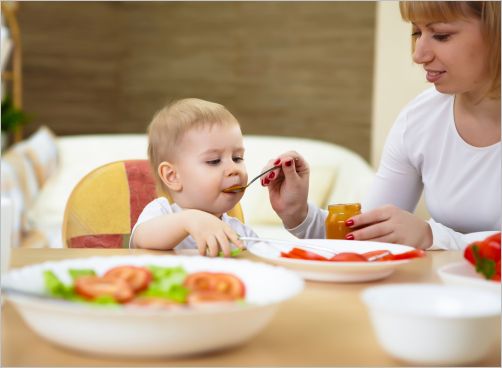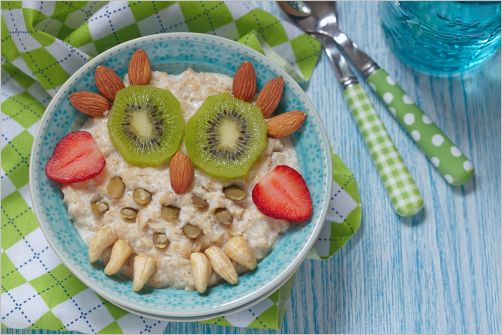Toddler Eating
Toddler eating is a big topic. When our little ones were babies, life was simple; we breastfed or prepared standard bottles of formula that were drunk down according to a neatly prepared schedule. Then baby was introduced to solid food, and at first may have taken to it ravenously. Often, though, parents notice that their toddler’s appetites level off around the toddler years. Our children just aren’t all that interested in food; there is too much to do, too much to see.
Sometimes parents get worried without cause: growth slows down a bit during the toddler years, and your child may not need quite as large a calorie intake as he did when he was a rapidly growing baby. That said, it’s important that our toddlers get a nutritious, well-balanced diet, including vitamins, minerals, protein, and fats. Worldwide, one and two year olds are more likely to be malnourished than any other age group. Part of this is that toddlers are simply not as good at eating as older children, and it’s easy for them not to get the nutrition they need.
So toddler eating is important.

Toddler Eating and Defeating the Picky Streak
How do you get your toddler eating nutritious, wholesome meals when he doesn’t like anything but apple juice and potato chips? Chalk the two of them down as fruit, vegetable, starch and fat, and feed him them for breakfast, lunch, and dinner? Not quite. But even if your toddler is as picky as they come, you can shape his or her eating habits the way you want them. It just takes some perseverance and ingenuity.
Here are some principals that can make a big difference in your home:
- Make junk food unavailable. Toddlers only have so much room in their little stomachs, so if they eat junk food, they’ll have no appetite for healthy food. Don’t give your toddler empty calories, and don’t eat empty calories yourself when you’re around your toddler.
- Make healthy food always available. Three meals a day isn’t enough for a toddler, but supplementing with cookie or chips snacks is no way to get healthy food into your toddler. Every snack should be as healthy as the main meal. Make string cheese, peanuts, fruit, or vegetables such as baby carrots and celery sticks available to your toddler throughout the day, and offer such snacks as yogurt, bananas, or cheese on brown bread.

- Work on Your Presentation. Food tastes better if it looks good, and for your toddler, that is especially true. Make his healthy food appetizing to him by making it look good. It’s actually fun to work with toddler food to make it fun for your little person; the serving sizes are so little, you’re not taking much extra trouble. Invest in some cookie cutters to cut out his healthy sandwiches into fun animal shapes, or make vegie critters out of boiled carrots, peas, and potatoes.
Your Toddler’s Eating & Your Example
There’s one more principal that’s important to keep in mind when you’re working on toddler eating: you are your toddler’s hero and his first example, and if you eat healthy, he will too. If you subsist mainly on a diet of Fritos and diet coke, don’t expect him to be into asparagus and grilled fish.
Save your junk food to enjoy after the toddler’s bedtime, and model good eating habits throughout the day: remember, you have an attentive audience of one.
Click here to return from Toddler Eating to Toddler and the Kitchen
New! Comments
Have your say about what you just read! Leave me a comment in the box below.